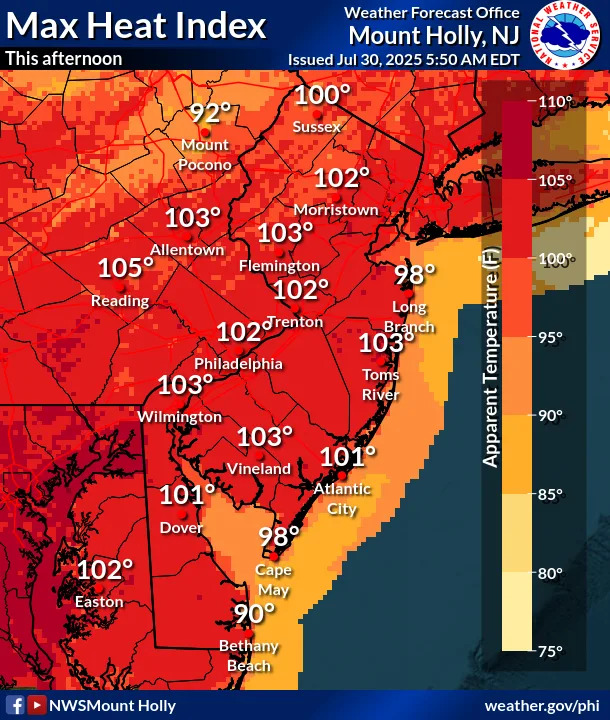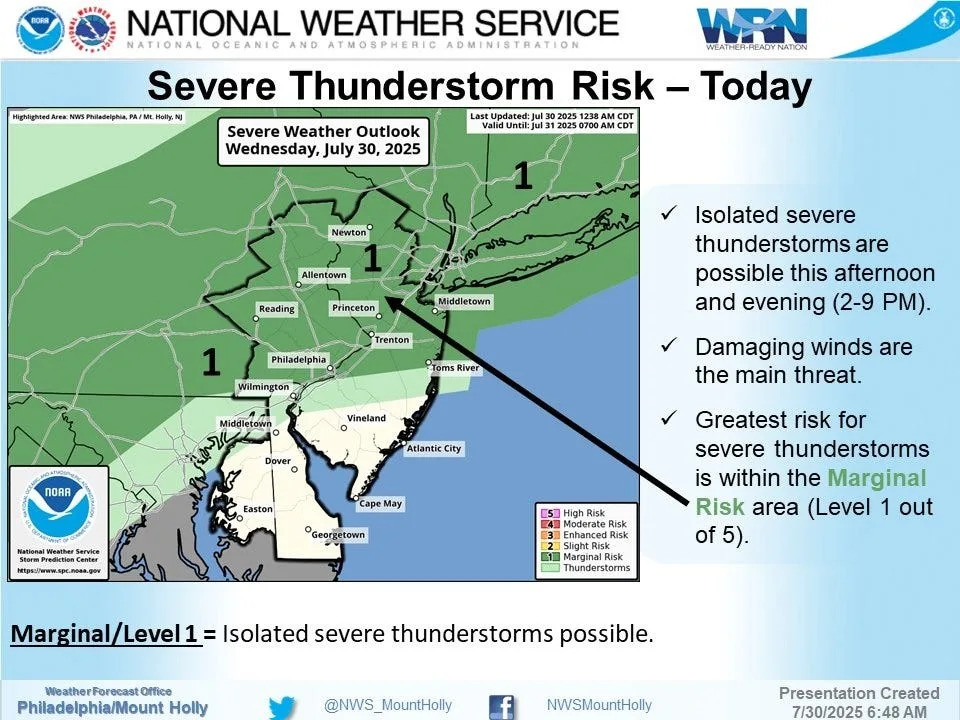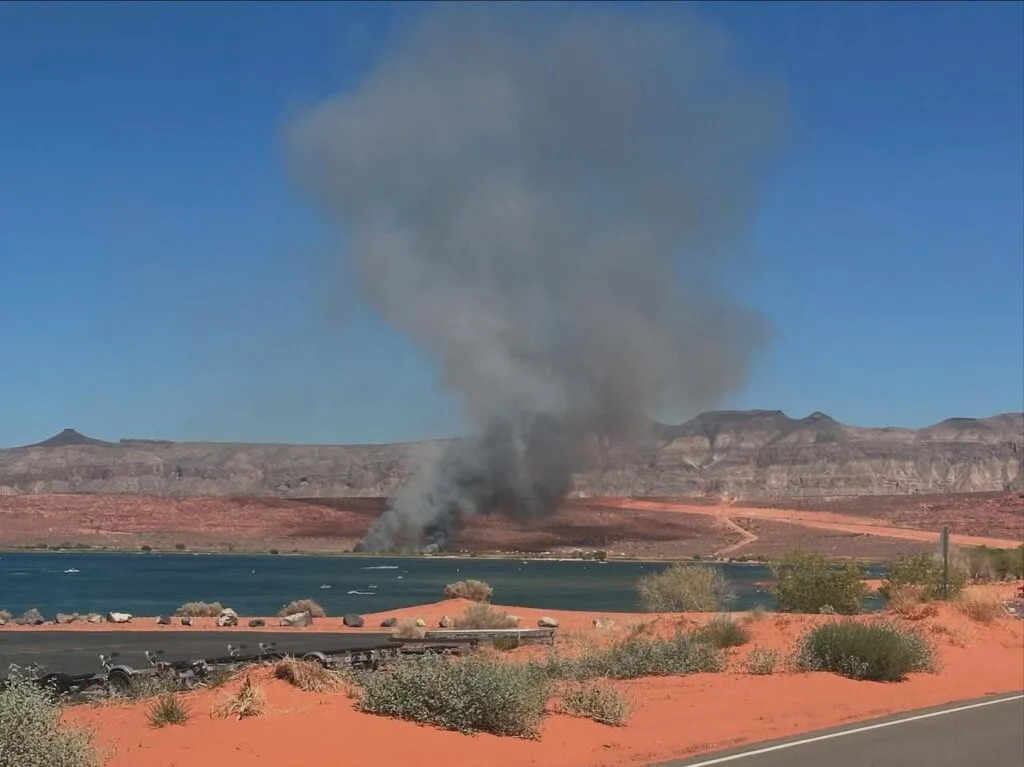It is now day three of hot and humid weather in Delaware on July 30 as a heat advisory will continue due to a heat wave that will push the heat index over 100 degrees in most of the state.
With the heat, severe thunderstorms should be expected for parts of the area on July 31.
Here's the latest weather forecast:
When will Delaware cool off? Here's when the heat wave will break
Delaware weather forecast: Heat advisory for Delaware
A heat advisory will in effect for northern Delaware, most of New Jersey and eastern Pennsylvania on July 30 as temperatures continue to rise through July 30, according to the National Weather Service in Mount Holly, New Jersey.

The forecast calls for very hot and humid conditions with heat indices between 100 to 105 degrees through 8 p.m. today, according to the NWS.
Conditions will lead to an increased risk of heat related illnesses.
Here's what it could feel like in Delaware on July 30 with the heat index:
Wilmington: 103 degrees
Dover: 101 degrees
Bethany Beach: 90 degrees
Severe thunderstorms possible
Along with the hot and humid conditions, there will be a possibility of isolated severe thunderstorms with locally damaging wind gusts, resulting in tree damage and power outages today and tomorrow.

Storms are possible on July 30 for areas along northwest of the Interstate 95 corridor from 2 to 9 p.m. and on July 31 south of Interstate 78 in the afternoon and evening, according to the NWS.
During the afternoon and into the evening of July 31, showers and thunderstorms with locally heavy rainfall could lead to flash flooding of urbanized and poor drainage areas, small streams and creeks in Delaware, New Jersey, southeastern Pennsylvania and northern Maryland. Flooding could result in road closures.
Storms will be capable of producing excessive rainfall rates of 1 to 2 inches per hour or more. Localized rainfall amounts of 3 inches or greater are possible.
What is an excessive heat warning?
There are four advisories for heat, according to the National Weather Service:
Excessive heat outlooks are issued when there is a potential for excessive heat within the next three to seven days. It gives people time to prepare for the weather.
Heat advisory: A heat advisory is issued within 12 hours of extreme heat conditions. Typically, the heat index will be above 100 degrees and the nighttime air temperature will not drop below 75 degrees. However, the criteria vary by area.
Excessive heat watch: A heat watch is issued when conditions are favorable for excessive heat in the next 24 to 72 hours.
Excessive heat warning: The warning is issued within 12 hours of the onset of hazardous heat conditions.
What is the heat index?
According to the National Weather Service, the heat index represents the temperature that feels like it to the human body when relative humidity is combined with air temperature.
When the body sweats, the perspiration evaporates, cooling the body. When the humidity is high, the sweat doesn't evaporate as quickly and the body doesn't cool itself as well. Therefore, the body feels warmer. The heat index represents the heat you're feeling outside.
There are four classifications for heat index, according to the National Weather Service:
Caution: When the heat index is 80-90 degrees, prolonged exposure to heat and physical activity can cause the body to feel fatigued.
Extreme caution: When the heat index is 90-103 degrees, the body may feel heat stroke, heat cramps and heat exhaustion with prolonged exposure and physical activity.
Danger: When the heat index is 103-124 degrees, heat cramps or heat exhaustion are likely, and heat stroke is possible with prolonged exposure and physical activity.
Extreme danger: When the heat index is 125 degrees or higher, heat stroke is likely.
Greg Giesen contributed to this story.
This article originally appeared on Delaware News Journal: Delaware weather: Heat advisory, thunderstorms, flash floods








Comments